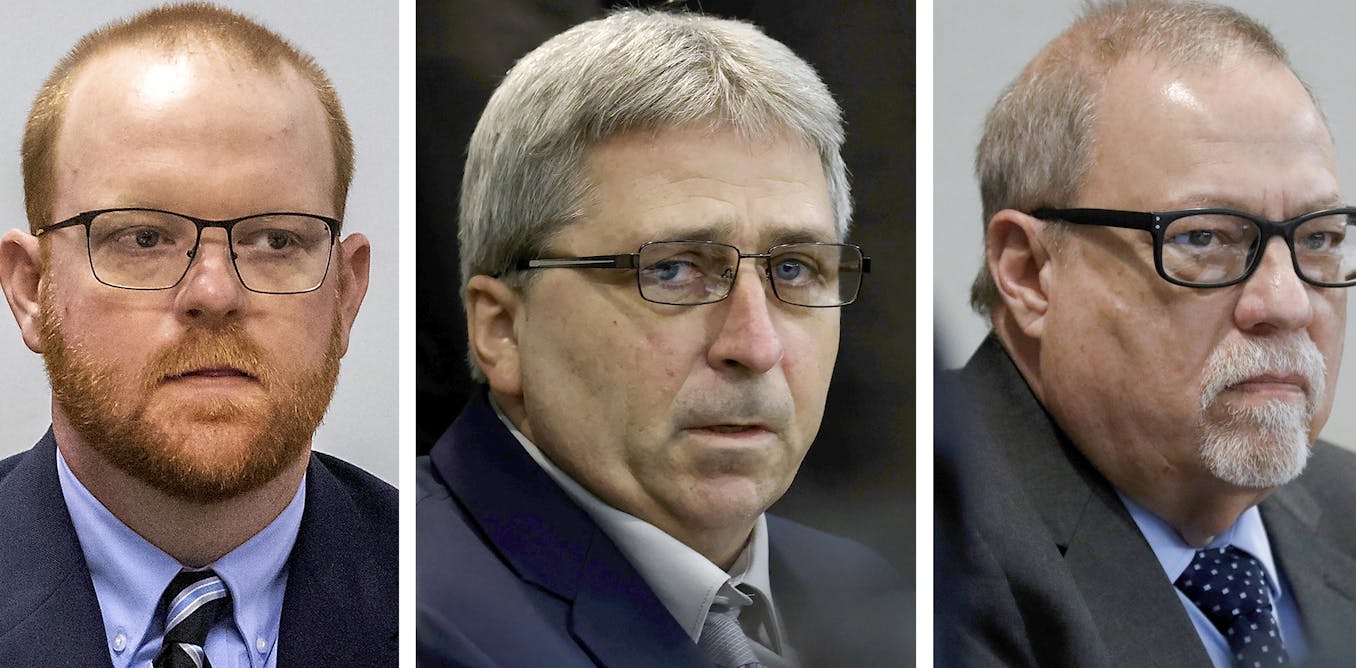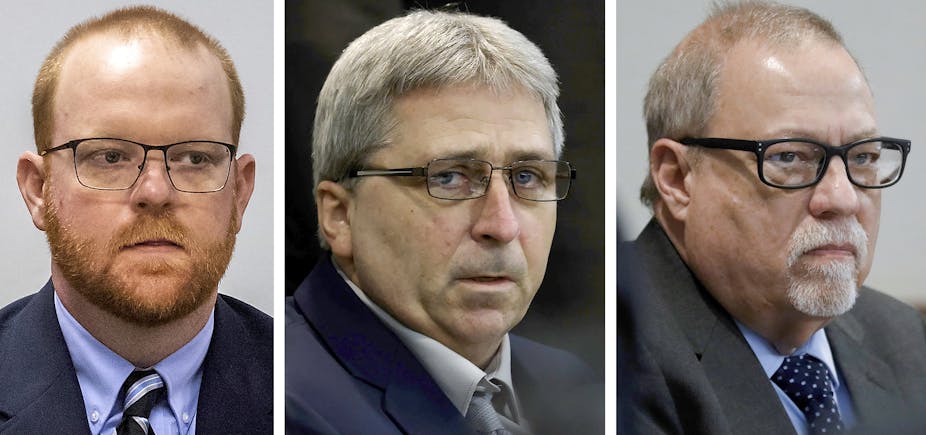
Guns and Racism in America
“We’ve got to have rules and obey them. After all, we’re not savages.” – William Golding, “Lord of the Flies,” 1954. Justice and accountability have
 www.counterpunch.org
www.counterpunch.org
Justice and accountability have prevailed in a fractured land with a long, tortured history of racism and too much fondness for guns. Disaster can strike when you put the two together.“We’ve got to have rules and obey them. After all, we’re not savages.”
– William Golding, “Lord of the Flies,” 1954.
A nearly all-White jury in Georgia convicted three White men of murder last week in the leaked videotaped chase and shooting death of Ahmaud Arbery, 25, an unarmed Black man jogging through a mostly White suburban Brunswick neighborhood on Feb. 23, 2020.
The men claimed self-defense. If there had been no video, there probably never would have been a trial. It took 74 days before arrests were made, with the video reportedly in police hands.
“Let the word go forth all over the world that a jury of 11 Whites and one Black, in the Deep South, stood up in the courtroom and said that Black lives matter,” the Rev. Al Sharpton, told a news conference after the verdict.
“Brunswick, Georgia will go down in history as the place where criminal justice took place,” he said.
Kyle Rittenhouse, 18, also used self-defense in the shooting deaths of two men and the wounding of a third, all White, during a Black Lives Matter protest of the killing of Jacob Blake, a Black man. The jury in Kenosha, Wis., acquitted the young man. That led to concerns among Arbery’s family and friends that the same thing would happen to the three men. It didn’t.
“It happens too often that they get away with it,” Micaiah Stewart, 18, who is Black, told The New York Times.
“It’s good to see racism lose,” Warren Stewart Jr., a Black clergyman from Phoenix and Micaiah’s father, told the Times.
Hawk Newsome, the cofounder of Black Lives Matter Greater New York, compared the verdict in Arbery’s trial with that of Rittenhouse’s, telling the paper they together sent a “mixed message.”
“You can’t outright chase down and murder Black people and those who support them,” he said. “But if you make it look like self-defense, you got a shot.”
The aftermath of the two verdicts reflected the stark divisions in the country, enshrined by the clear differences between the two major political parties, one mostly liberal and ethnically diverse, the other mostly conservative and White; they’re at each other’s throats.
The Rev. Lenny Duncan, 43, a Black pastor in Portland, Ore., contrasted the differences between the two verdicts in a comment to the Times about the impact they had on him: “The Kyle Rittenhouse verdict is the America I expect – the Arbery verdict is the America I fight for.”
Liberals cheered the results of the Georgia verdict. Conservatives literally embraced Rittenhouse as a hero, praised by Tucker Carlson as a “sweet kid” during a Fox News interview. “Imagine putting that kid in jail,” he said.
Two different verdicts, two different reactions to them, two different types of long-barrel guns, two different Americas. But remove the guns, and there wouldn’t have been deaths.
Trump, who met with Rittenhouse at Mar-a-Lago after the trial, told Fox News Friday that the acquittal “was a great decision. I was very happy to see it.”
Pro-Trump Republican officials competed to gain Rittenhouse’s attention, with Reps. Paul Gosar of Arizona, who was censured for tweeting an altered anime of him slaying a progressive Democratic congresswoman; Matt Gaetz of Florida; and Madison Cawthorn of North Carolina offered internships to their new symbol of might makes right.
Georgia Rep. Marjorie Taylor Greene, who was removed from committee assignments for embracing conspiracy theories, sponsored a House bill to award Rittenhouse a congressional gold medal for protecting Kenosha.
Then there’s the other view:
“Kyle Rittenhouse has become the poster child for a general feeling among some in this country that White America is under siege,” Eddie Glaude, chair of African-American studies at Princeton, wrote in The Washington Post. “Rittenhouse defended himself, this argument goes, and White America must do the same.”
“It’s very clear that they’re trying to make him their mascot,” Kurt Bardella, who advises the Democratic National Committee, told the Guardian, referring to Rittenhouse. “Any time that your mascot is someone who thought that it was an acceptable form of protest to show up at a political event with an AR-15, that is glorifying violence. And that’s a very dangerous thing to prop up and glorify.”
“We feel like justice was served and it was a relief to know the system actually worked in the case and they didn’t find a loophole,” Shawn Golden, 48, who is Black, told the Post.
At about the same time as these verdicts, a jury in a civil suit handed down a guilty verdict against the organizers of a violent far-right 2017 rally in Charlottesville, Va., awarding the nine plaintiffs $25 million in damages. One woman was fatally hit by a car that rammed the crowd. Her killer, James Fields, is serving several life sentences.
This was the rally in which Trump said some “very fine people” took part.
There appeared to be little chance the defendants could pay such an enormous fine because one of the lawyers, Joshua Smith, told the Times they “are destitute, none of them have any money.”
Brunswick and Kenosha are very different places where juries handed down very different verdicts at trials in which the defendants pleaded self-defense. It remains to be seen what influence these will have on future political protests and rallies.




